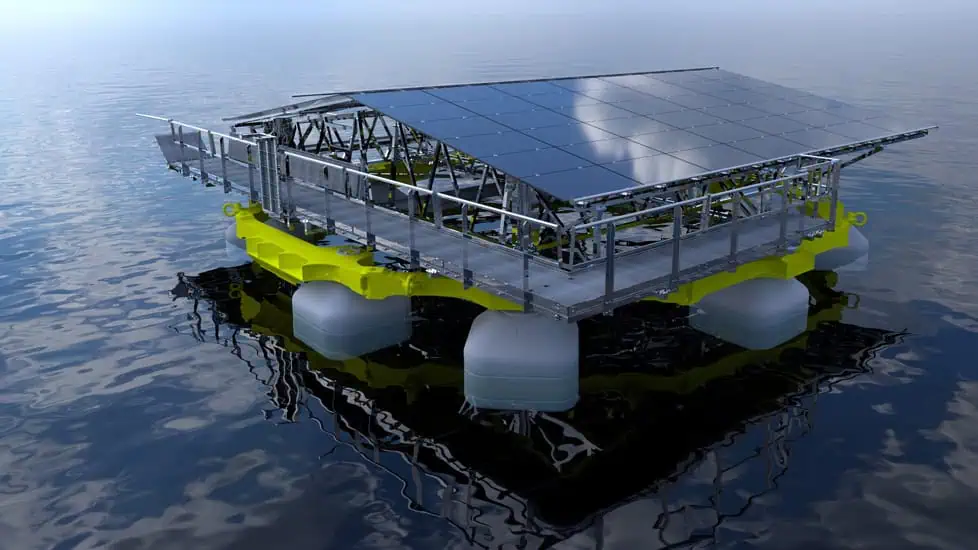Saipem presented the first full-scale prototype of XolarSurf, a cutting-edge modular solution for harsh offshore floating solar.
The XolarSurf prototype floater, created in collaboration with the Norwegian manufacturer Kystteknikk and other subcontractors, was lifted and launched at sea at Kystteknikk’s facilities in Dyrvik, on the island of Frøya, at the mouth of the Trondheim fjord in Norway.
Design to withstand waves up to 8m, this represents the first full-scale test and a key milestone in the readiness of the product. The prototype is expected to remain at sea for about one year, during which its performance and production capacity will be monitored.
XolarSurf is a modularised floating solar technology developed by Moss Maritime, Saipem’s Norwegian subsidiary specialised in design and engineering services for the offshore energy as well as other ocean-based sectors. A full industrialisation process has been conducted to exploit the cost reduction associated to repeated and scalable production.
This solution can produce electricity from solar panels mounted on floaters specifically designed for marine environments. Its design grants significant flexibility as it is formed by “islands”, each one consisting of several smaller floaters providing a safe space for the photovoltaic panels. Each floater may generate up to 35–45 kWp of installed power.
The prototype is a result of several years of development, engineering, model and component testing in laboratories as well as full-scale testing of critical marine operations relevant to the installation of an offshore floating solar park, with a joint effort by Saipem, Moss Maritime, and Equinor that have combined their commitment and expertise.
XolarSurf represents a new frontier in the floating solar segment, capable of being installed in any coastal or offshore location, even under harsh environmental conditions. It offers an optimal solution for hybrid projects, such as offshore wind farms, both fixed and floating. This technology is particularly suited for locations with limited access to land, remote areas, stand-alone grids, and can provide electricity to the growing aquaculture industry, both near shore and for new planned offshore installations. The modular design of XolarSurf allows it to be easily relocated to new sites or expanded in its existing location.













